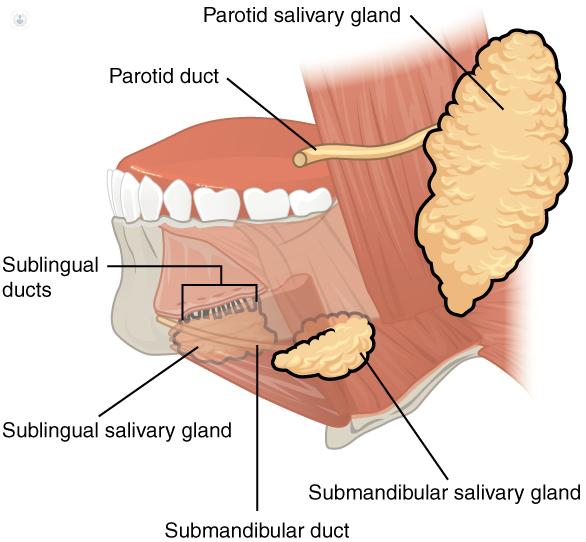

What is salivary gland surgery?
The main salivary glands, those that generate and empty saliva in the mouth, consistent of three pairs:
Salivary gland surgery is responsible for removing any of these glands. Anaesthesia during the procedure will depend on the gland that is removed: if it is from major salivary glands, such as the parotid gland, the procedure involves general anaesthesia, whereas if it is of minor salivary glands, local anaesthesia will be used.

Why is salivary gland surgery performed?
Salivary gland surgery is usually performed to remove tumours that grow in these glands and analyse them. It is estimated that more than 70% of these tumours are benign (non-cancerous), but any lump that is detected must be analysed.
The salivary glands can also present other pathologies, including:
- sialolithiasis – obstruction and inflammation of the salivary glands due to the presence of calcium stones
- sialadenitis – infection of the salivary glands, which can be an effect of sialolithiasis, or be caused by a virus or bacteria.
What happens during salivary gland surgery?
There are several surgical techniques depending on the gland that needs intervention:
- Parotidectomy (removal of the parotid glands) – this can be superficial, which is done when the tumour is on the facial nerve and usually removes the tumor without affecting the nerve, or total, which is carried out when the tumour surrounds or grows towards the facial nerve. In both cases, surgery consists of making a cut in front of the ear and down the neck to access the tumour and remove it.
- Submandibular sialoadenectomy: this consists in making an incision under the jawline to access the gland and extract it, sometimes along with the surrounding lymph nodes.
- Surgery of the sublingual glands: an incision is made through the mouth to extract a cyst called ranula.
- Surgery of the minor salivary glands: consists of making a cut in the area where the gland is located to access it and remove the tumor, the soft tissue and the area of affected bone.
In all surgeries, the area is closed with sutures once the affected tissue is removed. In some cases, it may be necessary to put temporary drains to remove fluids, such as saliva or blood.
Preparing for salivary gland surgery
Before the intervention, the specialist can perform a physical examination and talk about what medications can be taken beforehand and which ones cannot.
Post-operative care
After the procedure, the specialist observes the facial movements of the patient, asking them to smile or make facial gestures. Once at home, it is important to follow the doctor's instructions about wound care and drainage. The patient may also return to the clinic to remove the sutures. Once removed, the patient has to wash the area with mild soap and water.
